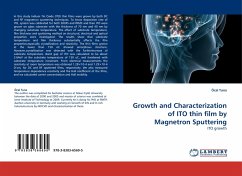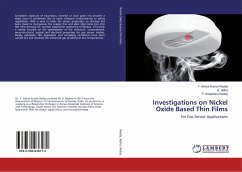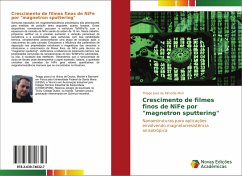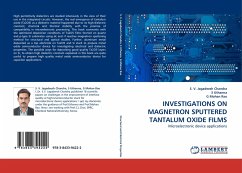In this study Indium Tin Oxide (ITO) thin films were grown by both DC and RF magnetron sputtering techniques. To know deposition rate of ITO, system was calibrated for both DCMS and RFMS and then ITO were grown on glass substrate with the thickness of 70 nm and 40 nm by changing substrate temperature. The effect of substrate temperature, film thickness and sputtering method on structural, electrical and optical properties were investigated. The results show that substrate temperature and film thickness substantially affects the film properties,especially crystallization and resistivity. The thin films grown at the lower than 150 oC showed amorphous structure. However,crystallization was detected with the furtherincrease of substrate temperature. Band gap of ITO was calculated to be about 3.64eV at the substrate temperature of 150 oC, and itwidened with substrate temperature increment. From electrical measurements the resistivity at room temperature was obtained 1.28×10-4 and 1.29×10-4 D-cm, for DC and RF sputtered films, respectively. We also measured temperature dependence resistivity and the Hall coefficient of the films, and we calculated carrier concentration and Hall mobility.
Bitte wählen Sie Ihr Anliegen aus.
Rechnungen
Retourenschein anfordern
Bestellstatus
Storno








